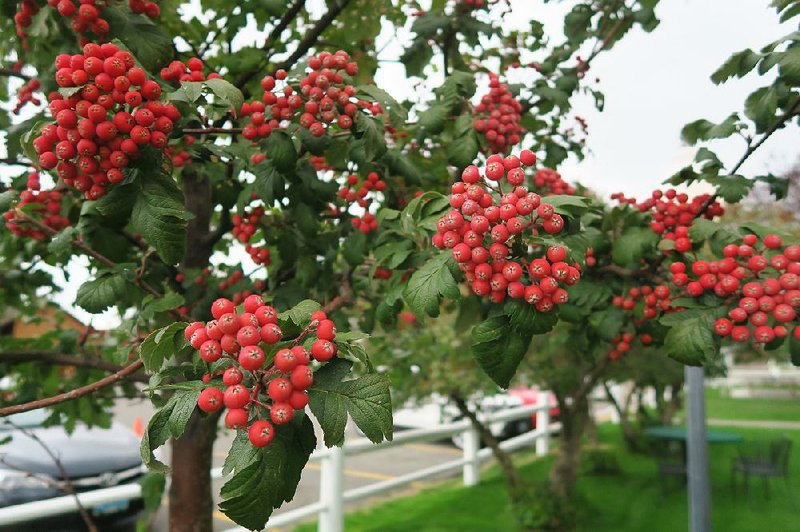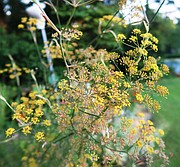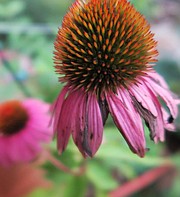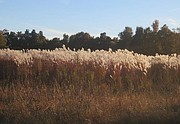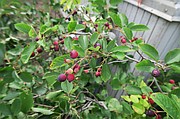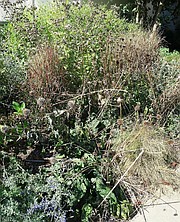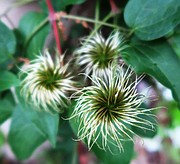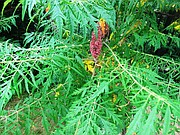We have had a taste of winterlike weather, and many plants are dormant or headed that way. As we turn our sights indoors, birds and other wildlife still have to survive outdoors.
Gardeners are often eager to attract birds to their yards with feeders and birdhouses; according to the U.S. Fish and Wildlife Service, more than 50 million North Americans feed birds.
That's more than 1 million tons of birdseed, what scientists call supplementary feeding, provided to birds every year.
But birds don't just eat seed. Their diets are heavy in insects during the spring and summer, but they also eat fruits, berries, nuts, nectar, and some eat other birds and animals.
In addition to attracting birds with bird feeders filled with seeds, you can attract birds to your yard year-round using a variety of plants.
Remember that not all birds eat the same things. Birds that survive mainly on insects migrate south to states where insects stay active during the winter.
Birds around the world eat 400 million to 500 million metric tons of insects per year, including caterpillars, beetles, flies, ants, moths, aphids, grasshoppers and crickets. During spring and summer, most songbirds eat insects and spiders, which are highly nutritious and abundant.
The nonmigratory songbirds that overwinter in Arkansas alter their eating habits to fruits and seeds as insect populations decline in the fall and winter.
LESS WORK TO DO
Now that a frost has occurred, many gardeners are beginning the task of fall cleanup. Instead of cutting back all the spent herbs, perennials and annuals, leave the seed heads in place for birds to eat.
Perennial grasses are loaded with seed heads now too. Let the garden look a little wild for now -- wait to do your cleanup before spring growth begins. You will be amazed at the number of birds that feast on the seed heads of spent basil and fennel, purple coneflower and black-eyed Susan.
TREES AND SHRUBS
If you are thinking of adding plants to your landscape, now is an excellent time to plant trees and hardy shrubs. Good berry and nut producers include dogwoods, hawthorns, oaks, hickories, serviceberry, redbuds, crabapples and mulberries.
• Mulberries are edible for humans as well as birds, but they can be messy, so plant them near the back corner of your yard -- not beside the driveway.
• Our native Eastern red cedar may not be the most attractive tree, but is a haven for birds, offering shelter and food.
In addition to trees, a range of shrubs, including berry-producing hollies, pyracantha, viburnums, wax myrtles, chokecherry, cherry laurel, clethra and beautyberry are all attractive to birds in the winter.
• Sumacs are ablaze with color in foliage and red seed heads now. The common sumac can be a bit too aggressive for a home garden, but consider the staghorn or cut leaf sumac or the lower fragrant sumac.
• Roses are forming seed heads called rose hips, and they are packed with nutrition and showy in the winter landscape.
SOCIABLE CLIMBERS
Don't overlook vines. Bittersweet has beautiful red or orange berries; clematis seed heads are full of seeds; and mature Virginia creeper does have blue-black berries that birds like.
In addition, the noxious poison ivy has showy edible fruits which are a favorite of birds, and that is a reason why you see it coming up around the yard -- birds eat the fruit and drop the seeds. Not all bird-friendly plants are garden friendly.
You also need to be aware that you may not just attract birds to your landscape by adding plants that feed birds or feeding with birdseed. Squirrels, raccoons, mice and rats also like birdseed and many fruits.
SHELTER FROM THE STORM
In addition to food, birds need shelter and water during the winter.
Evergreens provide birds shelter.
A water source that doesn't freeze solid in the cold is also helpful.
Bird feeders are a great way to supplement the diet of birds, especially in the winter. The seed that attracts the widest variety of birds is sunflower. Some of the less expensive mixes of birdseed that contain red millet and other fillers are usually not as attractive to birds. Many species will sort through the mixture, kicking out everything except the sunflowers they want to eat and leaving behind a mess that can attract rodents.
But again, not all birds eat the same thing. If you have specific birds you would like to attract to your yard, do your homework and learn what they like.
Janet B. Carson is a horticulture specialist for the University of Arkansas Cooperative Extension Service.
HomeStyle on 11/17/2018
